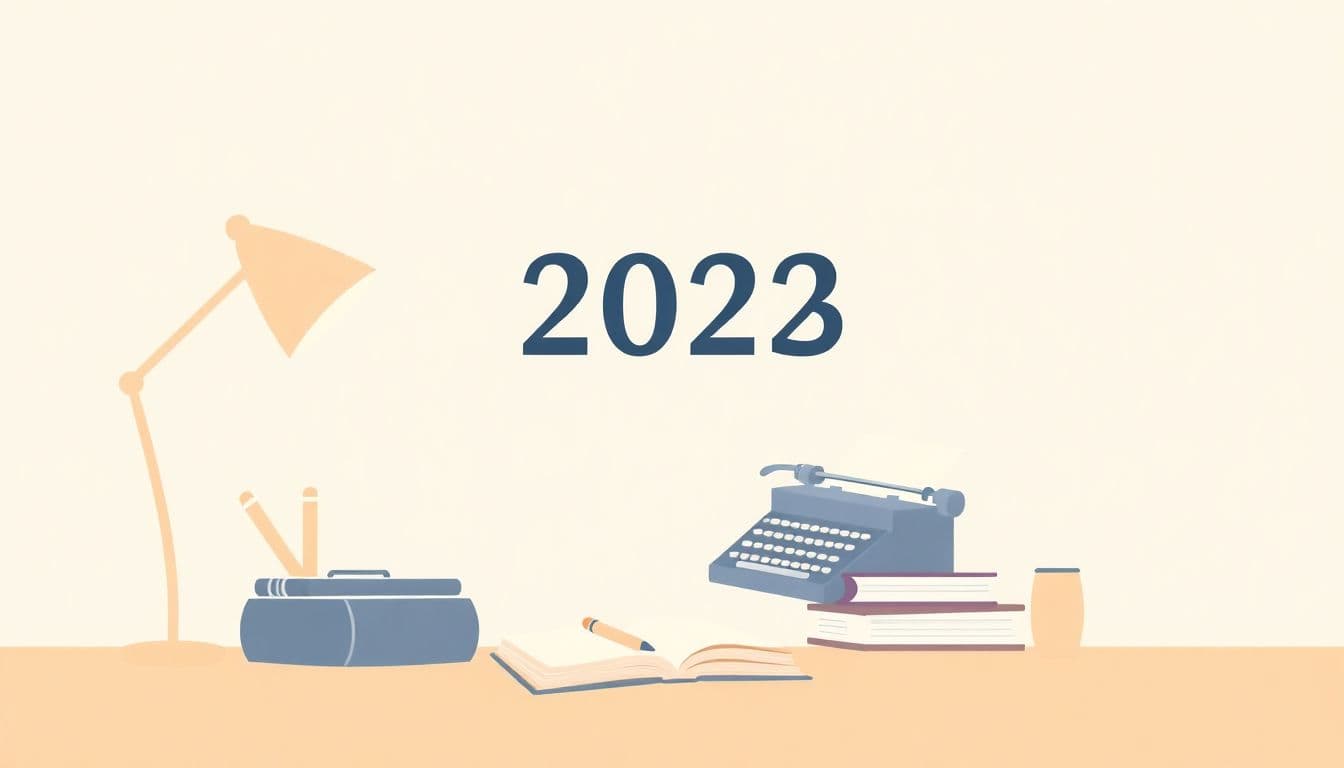Table of Contents
Ever run out of ideas for those big plot twists that keep readers hooked? It’s a common problem, and it can be frustrating trying to come up with surprises that actually work. But don’t worry, there are plenty of fresh ideas out there that can turn a predictable story into something truly surprising.
If you keep reading, you’ll get simple, clear plot twist ideas that any writer can use. No complicated formulas—just some quick inspiration to add that unexpected punch to your story.
Here’s a sneak peek: from hidden identities to surprising betrayals, this list covers fun twists you might not have thought of before. Let's dive into some ideas that can make your stories unforgettable.
Key Takeaways
Key Takeaways
- Use red herrings and misdirection to keep readers guessing while planting subtle clues that make the final twist feel natural. Consider twists like hidden identities, false protagonists, or characters who are dead from the start to surprise your audience.
- Build character secrets and complex motivations to set up impactful reveals. Nonlinear storytelling, flashbacks, and multiple perspectives can hide truths until just the right moment, making twists more shocking and satisfying.
- Create twists that are both unexpected and earned by carefully foreshadowing and planting clues. Test these reveals with beta readers to ensure they feel natural and deepen the story’s themes and characters.
- Play with story structure by using unreliable narrators, hidden truths, and shifting viewpoints. These techniques make large reveals more effective and keep readers engaged until the end.

1. Clear Plot Twist Ideas for Writers
If you want your story to knock readers off their feet, grasping some killer plot twist ideas is essential. The best surprises are those that feel both shocking and inevitable in hindsight, making the story unforgettable. A great twist isn’t just about shocking the audience—it’s about serving up something that redefines the narrative and deepens character arcs. Here’s a collection of some of the most effective plot twist concepts designed to keep your readers guessing.
Red Herrings and Misdirection
Using red herrings involves planting clues or consequences that lead readers to false conclusions. For example, a seeminglyimportant character might appear suspicious but turns out to be innocent, only for the real culprit to be someone entirely unexpected. This technique keeps suspense high and readers engaged as they try to piece everything together.
Chekhov’s Gun
This is about planting seemingly minor details that later play a major role in the story’s outcome. Imagine a character’s forgotten necklace resurfaces as a critical piece of evidence, or a casual remark becomes the key to solving the mystery. It rewards attentive readers when minor clues come back in a big way.
Anagnorisis (Moment of Recognition)
This twist occurs when a character experiences a sudden realization about their true identity, motivation, or relationship. Think of the protagonist discovering a parent is alive when they believed they were dead, flipping the entire story on its head. It’s about deepening emotional stakes through revelation.
False Protagonist
This involves presenting a character as the main hero, only to kill them off unexpectedly or reveal they aren’t who everyone thought. It shifts expectations and invites readers to rethink the narrative’s entire direction. For example, a story might start with a heroic figure’s journey, only for that character to be revealed as a red herring—setting the stage for the true hero to emerge.
Dead the Whole Time
Some of the most shocking twists involve revealing that a major character has been dead or nonexistent from the beginning—think of a narrator who claims everything they describe is real, only for readers to realize they’re a ghost or a figment of imagination. This twist completely alters the perspective of the story.
Flashbacks and Nonlinear Narratives
Implementing flashbacks or storytelling out of chronological order can lead to shocking revelations. A character might appear to be a victim, only for a flashback to show they were the perpetrator, or vice versa. Nonlinear storytelling helps hide truths until just the right moment, creating a layered, surprising experience.
Untrustworthy Narrator
Having a narrator who can’t be trusted—whether they’re deliberately misleading or mentally unstable—creates an unreliable storytelling device. When the truth finally emerges, it can be startling. For example, a story told from the perspective of a character hiding secrets can shift the entire meaning when the audience recognizes the bias or deception.
To craft compelling twists, start by laying foundational clues, then subverting expectations seamlessly so that the reveal feels earned. For more ideas on developing unpredictable plots, check out horror story plot ideas or explore dystopian plot generator for unique scenarios.

2. How to Craft a Plot Twist That Surprises and Satisfies
A great plot twist should feel both unexpected and earned. To achieve this, plant subtle clues throughout your story that point in the right direction without giving too much away. Consider flipping certain expectations, like revealing a seemingly minor character as the true villain, to keep readers on their toes. When developing your twist, think about how it affects your character arcs and overall theme, ensuring it adds depth rather than just shock value. Test your ideas by sharing drafts with trusted beta readers, asking if the reveal feels natural or out of the blue. Remember, a twist that makes sense in hindsight often sticks with readers far longer than one that appears random.
3. Developing Layered Characters for More Impactful Twists
Characters with secrets and complex motivations set the perfect stage for twisting plots. When your characters have hidden pasts or conflicting desires, revealing these pieces at the right moment can blow the story wide open. Spend time creating backstories that subtly influence their decisions, giving you more options for surprises later. Make sure the twist relates to their essential traits, so it feels authentic rather than forced. Playing with untrustworthy narrators or characters whose motives are misinterpreted adds extra layers that make twists more surprising. As you flesh out your cast, consider how each character’s secrets might be unveiled to shift the story unexpectedly.
4. Using Nonlinear Storytelling for Unexpected Outcomes
Moving away from a straight chronological narrative opens up opportunities for surprising reveals. Flashbacks, chapter jumps, or alternating perspectives can hide critical clues until just the right moment. For example, you might show a scene out of order to mislead readers into believing a character is innocent, only to reveal later that they were guilty all along. When planning your structure, think about what scenes should be revealed early and which should be saved for maximum impact. Nonlinear storytelling keeps readers piecing clues together and can lead to revelations that feel both shocking and inevitable once the full picture emerges.
5. Incorporating Red Herrings Effectively
Red herrings are a staple in creating suspense and throwing readers off the trail. To make them work, plant false clues that seem significant but ultimately lead to dead ends or redirections. For instance, giving a character suspicious behavior or an ambiguous motive keeps readers guessing. Be careful not to overdo it; too many red herrings can make your story confusing or seem lazy. Instead, use them purposefully, linking them to themes or character flaws to make the eventual reveal more satisfying. Remember, a well-placed red herring should make the final twist feel even more surprising because it was rooted in genuine clues.
6. Creating the Perfect Anagnorisis (Moment of Recognition)
This type of twist hinges on a character’s realization that changes everything. To craft a compelling anagnorisis, build up the emotional stakes gradually so the reveal hits hard. It often involves a character discovering a shocking truth about themselves, another character, or their situation that causes a shift in their perspective. For example, a detective might find out they’ve been working for the villain all along, or a character might realize their past actions have unintended consequences. Use subtle hints and symbols throughout your story to foreshadow this moment, making the eventual recognition feel natural rather than contrived.
7. Twisting the Setup with Fake Protagonists and Dead Characters
Playing with audience expectations by killing off the apparent hero early on is a strong move. It keeps your story unpredictable and makes room for a new, perhaps more complex, character to emerge. Similarly, revealing that a key character was dead from the start—like being a ghost or hallucination—can flip the entire narrative. To do this well, plant clues that hint at these possibilities without giving them away too soon. When used correctly, these twists challenge readers’ assumptions and add layers of mystery that keep them hooked until the very end.
8. Leveraging Flashbacks and Multiple Perspectives for Big Reveals
Switching viewpoints or using flashbacks can unearth hidden truths at just the right moment. For example, a flashback might reveal that a character thought to be innocent was involved in a crime, changing how readers perceive the story. Multiple perspectives also allow you to show different versions of events, and the eventual convergence can expose lies or secrets. When crafting these reveals, ensure each perspective provides clues that align with the overall story, creating a layered puzzle that readers can piece together — until the final, shocking revelation.
FAQs
Consider giving your villain a hidden motive, reveal a trusted character's secret, or introduce a surprising setting change. These twists keep readers engaged and add depth to your story's progression.
Foreshadow hints early on, maintain consistency with character motives, and avoid overly obvious surprises. A believable twist feels natural and surprises readers without feeling forced.
Overusing twists, making them too random, or not foreshadowing properly can break immersion. Avoid twists that don't connect to the story's core or undermine character development.
Balance shock value with narrative logic. Layer clues that align with the twist, ensuring it surprises readers but still feels earned and consistent with the story's flow.



